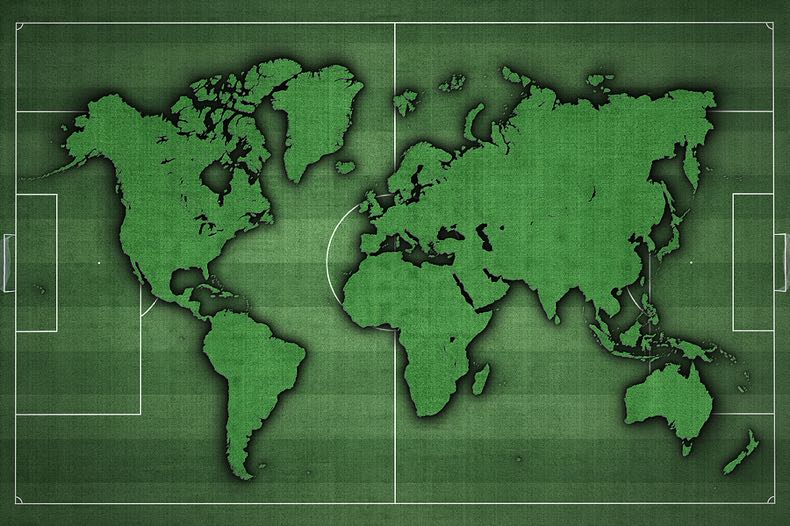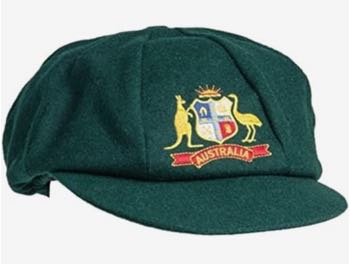
You may have noticed that when discussing domestic football, people will refer to the ‘appearances’ a player has made while in international football they refer to ‘caps’. We are going to explain what being ‘capped’ means in football.
Some footballing nations still award their players physical caps when they appear for the national team. When picked for their country and making an appearance, they are awarded a ceremonial cap with details of the game embroidered on it as a commemorative gesture. Players are given a single cap for each game they play. This is why when a player has made 50 appearances for their country, a commentator may naturally say that “this is their 50th cap”.
What a ‘Cap’ Means in International Football
This practice did differ across the countries, associations and eras. For example; with England, a player would win an actual cap for every appearance except for in major tournaments. In a World Cup or Euros tournament, a player would receive only one physical cap for the whole tournament. In Scotland, players in the past were only given caps for playing in the British Home Championship. The term still caught on however, with international appearances being known as caps even when players didn’t really receive one.
What Is Recognised Today

Colloquially, we use the term ‘cap’ to describe an appearance for any international team. In truth, FIFA only recognises certain matches at international level in which players should be awarded a cap. The games FIFA recognises as cap-worthy are all international A games.
If both countries field their first team, or ‘representative’ team, then players making an appearance may be given a cap. In other words; players playing in a game between England and Italy should be awarded caps, but those playing in Ireland Under-21 v France Under-21 may not.
Where ‘Capping’ Players Comes From
Much like many sporting traditions and the rules of the sports themselves, the practice of awarding caps come from the UK. The UK began awarding a physical, commemorative cap to each player taking part in an international match in association football and rugby football.
The idea of a cap itself is not a mad one. In the earliest days of football, even international football, the idea of teams wearing matching kits hadn’t taken off. That sounds mad to us now, but it’s true. To distinguish themselves from other teams therefore, players on the same side would were a certain type of cap.
There is an illustration made of the first known international football game, played between England and Scotland. In this illustration, the English players are shown wearing various school caps, while the Scottish players wore cowls. International caps were officially adopted in England in 1886. A proposal was made that all football players making an appearance for England at international level would receive a white silk cap featuring an embroidered red rose on the front. They were to be called ‘International Caps’.
Capping in Other Sports
 Capping players at international level may come from football, but it spread to other sports too. The term ‘cap’ applies to many sports now, notably rugby and cricket, though a physical cap is not always given. Capping is a recognised way to indicate an international appearance.
Capping players at international level may come from football, but it spread to other sports too. The term ‘cap’ applies to many sports now, notably rugby and cricket, though a physical cap is not always given. Capping is a recognised way to indicate an international appearance.
In some cases, a cap is awarded before a player’s international debut. Other teams give their players a cap for every single appearance. One famous example is the Australian cricket team’s ‘baggy green’ cap. Either way, when describing a sportsperson’s international appearances, media will often refer to how many times they’ve been capped by their country.
Most Capped Footballers in the World
There is just something a little different about being capped. While a player may make 400, 500 or even 800 appearances for a single football club, the wider sporting world often doesn’t care a whole lot. That is the domain of the fans of that club only, as well as the player of course. At international level however, there seems to be something so impressive about people being capped multiple times. These are the top 20 most capped male football players in the world, as of mid-November 2023:
| Player | Country | Caps | Date Range | |
|---|---|---|---|---|
| 1 | Cristiano Ronaldo | Portugal | 203 | August 20, 2003 – October 16, 2023 |
| 2 | Bader Al-Mutawa | Kuwait | 196 | September 4, 2003 – June 14, 2022 |
| 3 | Soh Chin Ann | Malaysia | 195 | November 19, 1969 – October 18, 1984 |
| 4 | Ahmed Hassan | Egypt | 184 | December 29, 1995 – May 22, 2012 |
| 5 | Ahmed Mubarak | Oman | 183 | September 25, 2003 – December 2, 2019 |
| 6 | Sergio Ramos | Spain | 180 | March 26, 2005 – March 31, 2021 |
| 7 | Andres Guardado | Mexico | 179 | December 14, 2005 – November 26, 2022 |
| 8 | Lionel Messi | Argentina | 178 | August 17, 2005 – October 17, 2023 |
| 9 | Claudio Suarez | Mexico | 177 | July 26, 1992 – June 1, 2006 |
| 10 | Gianluigi Buffon | Italy | 176 | October 29, 1997 – March 23, 2018 |
| 11 | Maynor Figueroa | Hunduras | 175 | January 31, 2003 – February 2, 2022 |
| 12 | Hassan Al-Haydos | Qatar | 174 | August 9, 2008 – October 13, 2023 |
| 13= | Mohamed Al-Deayea | Saudi Arabia | 173 | April 9 1993 – May 11, 2006 |
| 13= | Amer Shafi | Jordan | 173 | August 17, 2002 – February 1, 2021 |
| 15= | Hossam Hassan | Egypt | 170 | September 10, 1985 – February 7, 2006 |
| 15= | Luka Modric | Croatia | 170 | March 1, 2006 – October 15, 2023 |
| 17 | Ivan Hurtado | Ecuador | 168 | May 24, 1992 – October 14, 2014 |
| 18 | Iker Casillas | Spain | 167 | June 3, 2000 – June 1, 2016 |
| 19 | Vitalijs Astafjevs | Latvia | 166 | August 26, 1992 – November 17, 2010 |
| 20 | Cobi Jones | United States | 164 | September 3, 1992 – October 9, 2004 |
A good chunk of this top 20 heading towards the end of 2023 have played in the modern day. More and more international football is played but, more to the point, players are able to keep fit and well for longer which allows them to continue at the highest level.
Cristiano Ronaldo, when it comes to fitness and wellbeing, being the best example out there. In the women’s game, a number of players have exceeded 300 caps. There was traditionally more emphasis there on international football, though that has changed in recent years.
